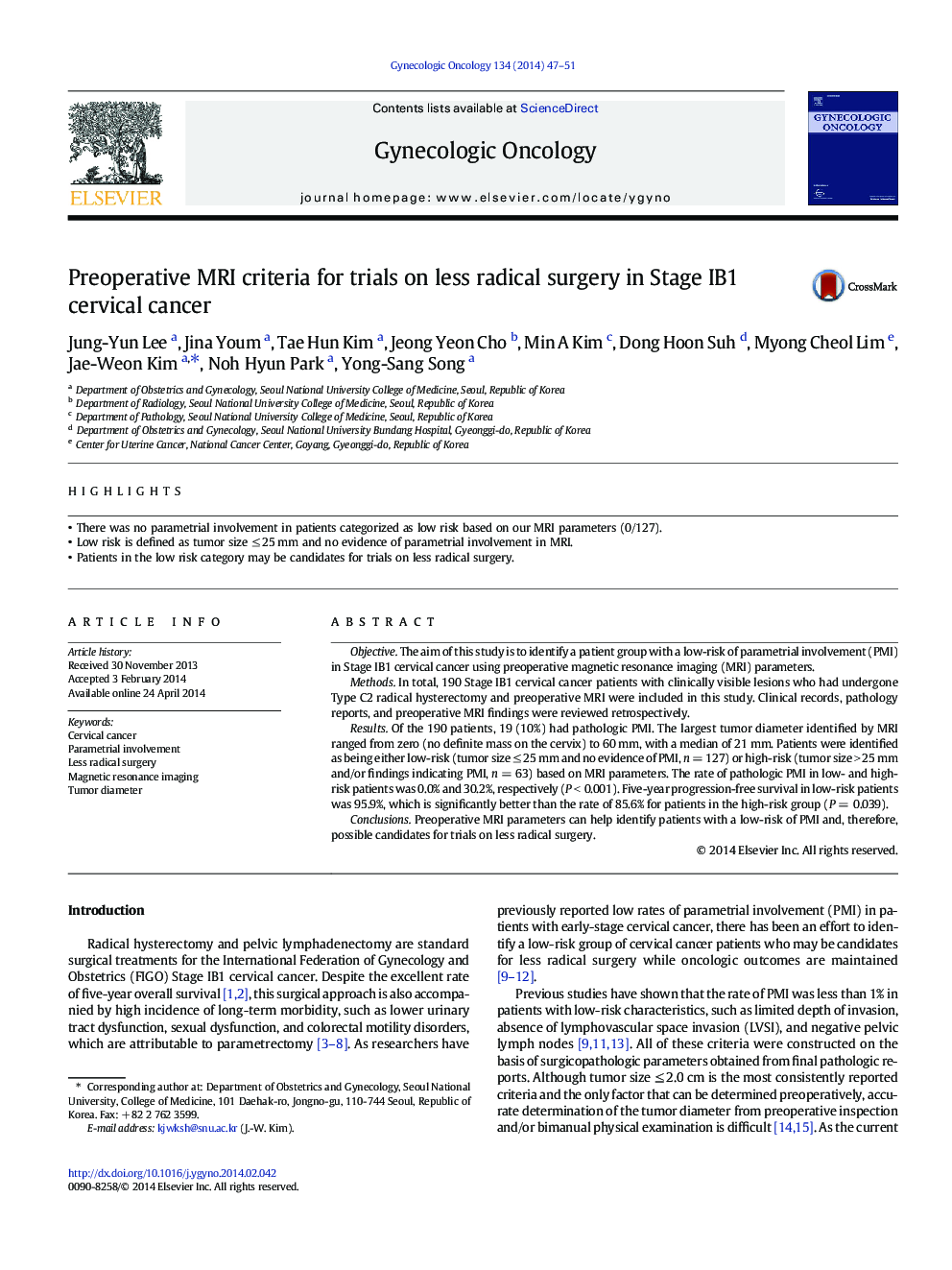| Article ID | Journal | Published Year | Pages | File Type |
|---|---|---|---|---|
| 3944558 | Gynecologic Oncology | 2014 | 5 Pages |
•There was no parametrial involvement in patients categorized as low risk based on our MRI parameters (0/127).•Low risk is defined as tumor size ≤ 25 mm and no evidence of parametrial involvement in MRI.•Patients in the low risk category may be candidates for trials on less radical surgery.
ObjectiveThe aim of this study is to identify a patient group with a low-risk of parametrial involvement (PMI) in Stage IB1 cervical cancer using preoperative magnetic resonance imaging (MRI) parameters.MethodsIn total, 190 Stage IB1 cervical cancer patients with clinically visible lesions who had undergone Type C2 radical hysterectomy and preoperative MRI were included in this study. Clinical records, pathology reports, and preoperative MRI findings were reviewed retrospectively.ResultsOf the 190 patients, 19 (10%) had pathologic PMI. The largest tumor diameter identified by MRI ranged from zero (no definite mass on the cervix) to 60 mm, with a median of 21 mm. Patients were identified as being either low-risk (tumor size ≤ 25 mm and no evidence of PMI, n = 127) or high-risk (tumor size > 25 mm and/or findings indicating PMI, n = 63) based on MRI parameters. The rate of pathologic PMI in low- and high-risk patients was 0.0% and 30.2%, respectively (P < 0.001). Five-year progression-free survival in low-risk patients was 95.9%, which is significantly better than the rate of 85.6% for patients in the high-risk group (P = 0.039).ConclusionsPreoperative MRI parameters can help identify patients with a low-risk of PMI and, therefore, possible candidates for trials on less radical surgery.
